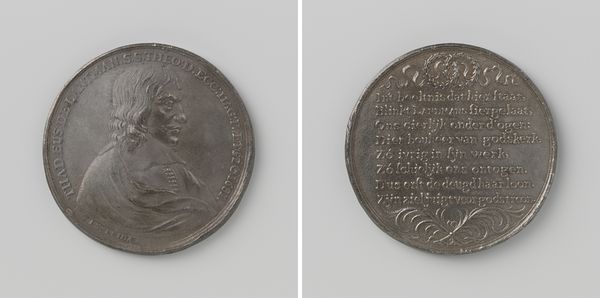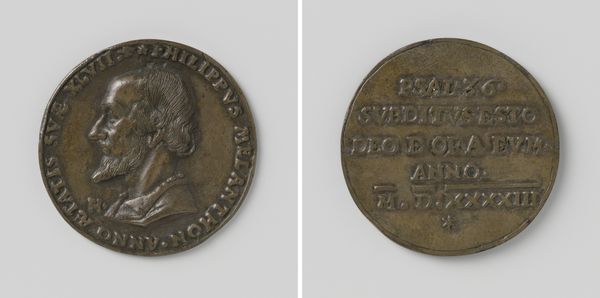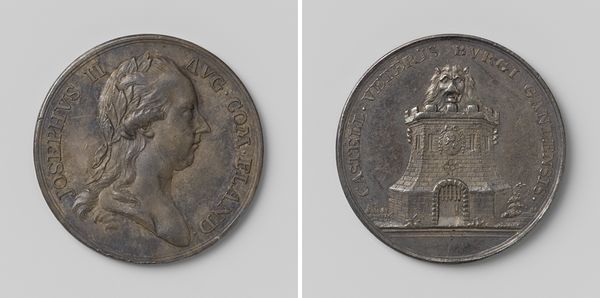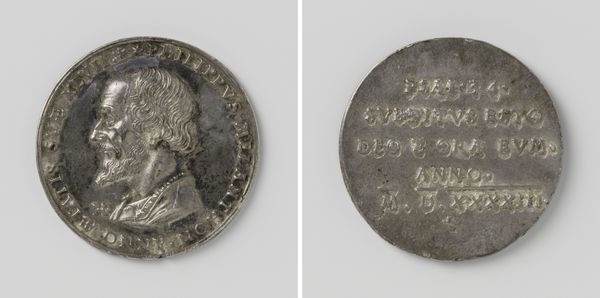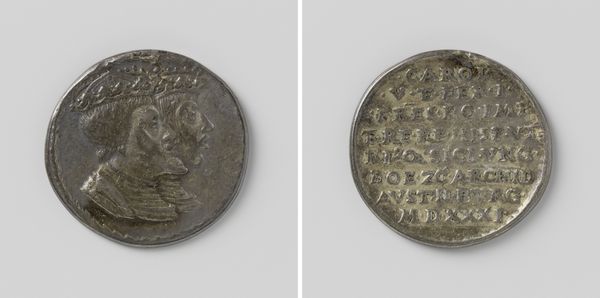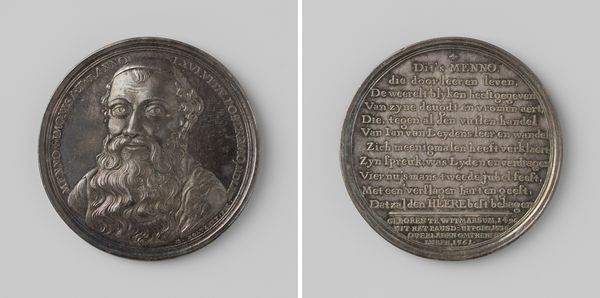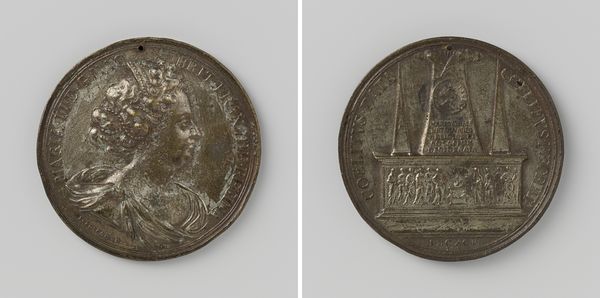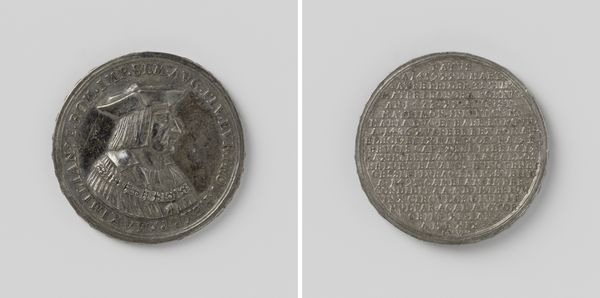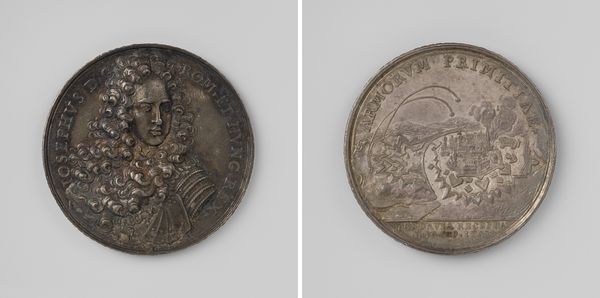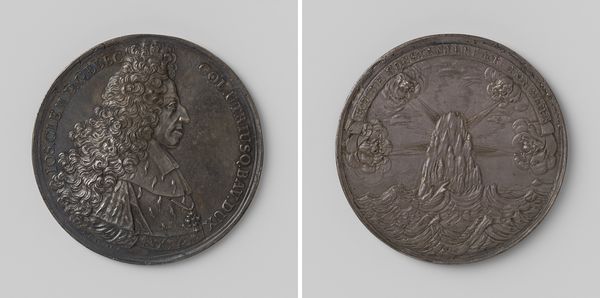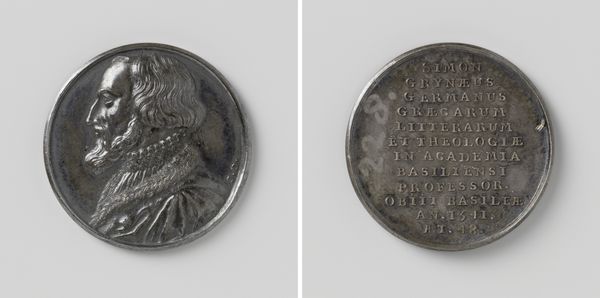
silver, metal, sculpture
#
portrait
#
silver
#
metal
#
11_renaissance
#
sculpture
#
history-painting
#
monochrome
Dimensions: diameter 3.2 cm, weight 13.20 gr
Copyright: Rijks Museum: Open Domain
Curator: Here we have a rather intriguing piece, a silver medal from around 1700, created by Christian Wermuth, titled "Overlijden van Martin Luther, hervormer in Duitsland"—"The Death of Martin Luther, Reformer in Germany." Editor: It strikes me as a memento, something deeply personal. The monochrome silver lends a somber, almost ghostly quality to Luther's portrait. It looks like he is fading into the metal itself. Curator: Indeed. The choice of silver as a medium, coupled with the precise detailing typical of medals from that period, speaks to Luther's enduring importance and the desire to commemorate his legacy. It’s fascinating how metals like silver helped circulate reformation ideas through popular culture. Editor: You can tell this piece wants to do more than simply immortalize Luther, as if the date wasn't enough: so much writing! The inscription on the reverse really drives that home, with concise textual landmarks from Luther's life that shaped both his history, and German reformation. I think in particular about the use of abbreviations and a classical writing in such small space, because, ultimately, every single character of this long, inscribed summary makes a statement. Curator: The density of the inscription speaks volumes. The medal attempts to encapsulate Luther’s entire career, from his birth to his final days. Consider that during this period the production and circulation of images of reformers became a means of both celebrating and solidifying Protestant identities and narratives, which also played out through secular media. Editor: It really highlights how intertwined religion and politics were at the time. As we look closer, consider who had access to art like this. Luther's transformation into a man memorialized in silver marks an interesting tension in Protestant values. His revolution wanted more common folks to know the holy script, while still preserving elitism. Curator: Absolutely. These medals, while potentially circulated widely, also functioned as markers of status and affiliation, reminding us of the complex ways in which religious and political identities were performed and reinforced through material culture. Editor: Reflecting on this object, I am struck by its capacity to condense a tumultuous and world-changing life into a single, tactile piece. Curator: It prompts us to think critically about how individuals are historicized and transformed into symbols, impacting not just our view of them, but the future in whose hands these symbols linger.
Comments
No comments
Be the first to comment and join the conversation on the ultimate creative platform.
